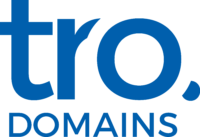Understanding Scalability
Understanding scalability is foundational when building a website, especially when using low-cost builders. Scalability refers to your website’s capacity to grow and handle increased demands, such as more visitors or additional content, without suffering performance degradation. Essentially, a scalable website is one that can expand seamlessly as your audience or business grows, ensuring that users continue to have a smooth, efficient experience.
To achieve scalability, it’s important to focus on both the architecture and the underlying technology of your website. An adaptable website structure is essential, allowing for easy updates and modifications without major overhauls. This means your site should be built with future growth in mind, employing a flexible layout that can accommodate new features, pages, or products.
One of the critical aspects of scalability is load balancing, which involves distributing incoming traffic across multiple servers to prevent any single server from becoming overwhelmed. By doing so, your site can handle high volumes of traffic more efficiently, reducing the risk of downtime or slow load times. Load balancing can be particularly useful during peak periods, such as holiday sales or special promotions.
Another factor to consider is database management. As your website grows, so does the amount of data it needs to handle. Efficient database management ensures that data retrieval and storage processes remain quick and reliable, even as the volume of data increases. Utilising optimised queries and indexing can significantly improve database performance, which in turn supports the overall scalability of your site.
Content delivery networks (CDNs) are another valuable tool for enhancing scalability. CDNs store copies of your site’s static content, such as images and videos, on servers located around the world. When a user accesses your website, the CDN serves the content from the nearest server, reducing load times and minimising the strain on your main server. This not only improves user experience but also allows your site to handle more simultaneous visitors.
Scalability also involves anticipating future needs and being prepared to adapt. This could mean choosing a Website Builder that offers upgrade options or supports third-party integrations, allowing you to add new functionalities as required. It’s essential to choose a builder that can grow with your business, providing the flexibility to scale up resources and capabilities without significant disruptions.
Security should not be overlooked when considering scalability. As your site grows, it becomes a more attractive target for cyber threats. Implementing robust security measures, such as SSL certificates and regular software updates, helps protect your site and its users. Additionally, scalable security solutions can adapt to increased traffic and data, ensuring your site remains secure as it expands.
Lastly, user experience is paramount in a scalable website. As you attract more visitors, maintaining a high-quality user experience becomes even more critical. This involves ensuring fast load times, easy navigation, and responsive design that works well across different devices. Prioritising user experience not only helps retain visitors but also supports your site’s growth by encouraging repeat visits and positive word-of-mouth.
By understanding and implementing these principles, you can build a website that is not only scalable but also robust, user-friendly, and ready to meet the demands of a growing audience.
Choosing the Right Low-Cost Website Builder
When it comes to choosing a low-cost Website Builder, several factors come into play. These builders typically cost between $10 to $50 monthly, and this price often includes web hosting and domain registration. This affordability makes them attractive options for startups and small businesses.
While selecting a builder, consider the following aspects: ease of use, template variety, customisation options, and customer support. Some popular options include Wix, Weebly, and Squarespace. Compare their features and decide which best aligns with your needs.
Ease of use is crucial, especially if you lack technical skills. A user-friendly interface can save you time and frustration. Look for builders that offer drag-and-drop functionality, allowing you to design your site without needing to code. Comprehensive tutorials and customer support can also be invaluable, helping you navigate any challenges you encounter.
Template variety is another important consideration. The best builders offer a wide range of templates that cater to different industries and styles. This allows you to choose a design that suits your brand without needing extensive customisation. Templates should be mobile-responsive, ensuring your site looks good on all devices.
Customisation options are essential for creating a unique website. While templates provide a good starting point, you’ll want the ability to tweak them to match your brand’s aesthetics. Look for builders that offer extensive customisation options, such as the ability to change fonts, colours, and layouts. Advanced users may also appreciate access to the underlying HTML and CSS for more detailed modifications.
Customer support can make or break your experience with a Website Builder. Opt for providers that offer robust support options, including live chat, email, and phone support. Some builders also offer community forums and extensive knowledge bases, which can be helpful resources when you encounter issues.
Additionally, consider the builder’s scalability. As your business grows, your website needs may evolve. Choose a builder that offers upgrade options, such as advanced e-commerce features or additional storage and bandwidth. This ensures your website can grow with your business without needing to switch platforms.
Another factor to consider is third-party integrations. These can extend your website’s functionality by connecting it with other tools you use, such as email marketing services, analytics platforms, and social media channels. Builders that support a wide range of integrations can help streamline your workflow and enhance your site’s capabilities.
Security is also a vital consideration. Ensure the builder provides essential security features like SSL certificates, regular updates, and protection against common threats. A secure website not only protects your data but also builds trust with your visitors.
Finally, consider the builder’s performance. Some low-cost builders may compromise on speed and reliability. Look for reviews and performance metrics to ensure the builder you choose offers fast load times and minimal downtime.
Planning Your Website Structure
A well-thought-out website structure plays a crucial role in ensuring scalability. Start by designing a user-friendly layout that prioritises your content effectively. Visitors should be able to navigate your site with ease, finding what they need quickly and efficiently. This can be achieved through an uncluttered design that focuses on clear presentation and intuitive placement of elements.
An organised navigation system is vital for both user experience and search engine optimisation. Use clear, descriptive labels for your menu items and maintain consistent navigation across all pages. This consistency helps users understand your site’s structure and improves their ability to find relevant information.
Consider implementing a logical hierarchy for your content. Group related pages and sections together in a way that makes sense to your users. For example, if you have a blog, make sure it’s easily accessible from the main menu, and organise posts by categories or tags. This not only aids in user navigation but also helps search engines index your content more effectively.
Another important aspect of planning your website structure is to think about your internal linking strategy. Internal links connect different pages within your site, guiding users to additional relevant content and helping search engines crawl your site more comprehensively. Ensure that these links are logical and helpful, pointing users to pages that offer further value or related information.
Employ breadcrumb navigation to enhance user experience further. Breadcrumbs show users their path within your site, making it easier for them to backtrack if necessary. This feature is especially useful for larger websites with multiple layers of content.
When planning your structure, keep mobile users in mind. Mobile traffic is significant, and your site should offer an equally seamless experience on smartphones and tablets. This means employing responsive design principles to ensure that your layout adapts smoothly to different screen sizes.
Make sure to include a search function, particularly if your site has a lot of content. A well-functioning search bar allows users to quickly find specific information, improving their overall experience and encouraging them to stay on your site longer.
Another critical element is to incorporate calls-to-action (CTAs) strategically. CTAs guide users toward desired actions, such as signing up for a newsletter or making a purchase. Place these elements prominently but not obtrusively, ensuring they fit naturally within your site’s layout.
Consider the use of footer navigation to provide additional pathways for your users. Footers can include links to important pages, contact information, and social media profiles, serving as a secondary navigation tool.
Lastly, don’t forget to plan for future expansion. As your website grows, you may need to add new sections or features. Designing a flexible structure from the outset allows for easier updates and modifications, ensuring your site can evolve without major overhauls.
Optimising Performance
Performance optimisation is crucial for ensuring a scalable website. Slow-loading pages can significantly impact user experience, deterring visitors and negatively affecting search engine rankings. To optimise performance, start by selecting lightweight themes that are designed for speed. These themes use minimal resources and help your site load faster, providing a better user experience.
Minimising the use of heavy scripts and plugins can also improve performance. While scripts and plugins add functionality, they can slow down your site if overused. Carefully evaluate each plugin’s necessity and impact on performance. Disable or remove any that aren’t essential to maintain a lean, efficient website.
Implementing caching is another effective technique. Caching stores static versions of your pages, reducing the server load and speeding up content delivery. There are various types of caching to consider, including browser caching, page caching, and object caching. Utilising these methods can significantly enhance load times and improve overall performance.
Optimising images is equally important. Large, uncompressed images can slow down your site considerably. Use image compression tools to reduce file sizes without compromising quality. Additionally, consider using modern image formats like WebP, which offer better compression rates compared to traditional formats like JPEG or PNG.
Content delivery networks (CDNs) can further enhance performance. CDNs distribute your site’s static content across multiple servers worldwide, ensuring that users can access your site from the server closest to them. This reduces latency and improves load times, particularly for visitors located far from your main server.
JavaScript and CSS optimisation also play a role in performance. Minify your JavaScript and CSS files to remove unnecessary characters, such as spaces and comments, which reduces file sizes and speeds up load times. Combining multiple JavaScript and CSS files into single files can also decrease the number of HTTP requests, further enhancing performance.
Another technique is to leverage lazy loading for images and videos. Lazy loading defers the loading of non-critical resources until they are needed. For example, images only load when they enter the viewport, reducing initial load times and saving bandwidth.
Server response time is another critical factor. A slow server response can significantly impact your site’s speed. Ensure your server is properly configured and optimise your database queries to reduce response times. Regularly monitoring your server performance can help you identify and resolve issues promptly.
Lastly, consider implementing asynchronous loading for JavaScript. This allows JavaScript files to load in parallel with other resources, rather than sequentially, speeding up the overall page load time.
By adopting these techniques, you can optimise your website’s performance, ensuring it remains fast and efficient as it scales.
Implementing Scalable Hosting Solutions
When it comes to implementing scalable hosting solutions, it’s essential to choose an option that aligns with your website’s growth and performance needs. While shared hosting is a popular choice due to its low cost, it can struggle to handle high traffic and resource-intensive applications. As your website expands, transitioning to more robust hosting options like VPS (Virtual Private Server) or cloud hosting becomes crucial.
VPS hosting provides a dedicated portion of a server’s resources, offering more control and scalability compared to shared hosting. With VPS, you can easily upgrade your resources, such as CPU, RAM, and storage, as your traffic increases. This ensures consistent performance and reliability, even during peak periods. Additionally, VPS hosting often includes advanced security features and root access, allowing for greater customisation and control over your server environment.
Cloud hosting, on the other hand, distributes your website across multiple servers, ensuring high availability and redundancy. This means if one server experiences an issue, another can seamlessly take over, minimising downtime and enhancing reliability. Cloud hosting is highly scalable, allowing you to adjust resources on-demand based on your current needs. This pay-as-you-go model ensures you only pay for what you use, making it a cost-effective solution for growing websites.
When choosing a scalable hosting solution, consider providers that offer automatic scaling features. This technology automatically adjusts your resources in real-time, ensuring your site can handle sudden traffic spikes without manual intervention. Providers like Amazon Web Services (AWS), Google Cloud Platform (GCP), and Microsoft Azure are renowned for their robust scalability options and reliable infrastructure.
It’s also important to evaluate the support and customer service offered by your hosting provider. Look for providers with comprehensive support channels, including live chat, email, and phone support. Reliable customer service is crucial for resolving issues quickly and ensuring your website remains operational.
Additionally, consider the geographic location of your hosting servers. Hosting your website on servers closer to your primary audience can significantly reduce latency and improve load times. Many hosting providers offer data centres in multiple locations worldwide, allowing you to choose the most optimal location for your audience.
Security is another critical factor when selecting a hosting solution. Ensure your provider offers essential security measures such as DDoS protection, firewalls, and regular backups. Advanced security features like automated updates and malware scanning can also help protect your website from potential threats.
Utilising Plugins and Add-ons Wisely
Plugins and add-ons can significantly enhance your website’s capabilities, providing features such as improved search engine optimisation (SEO), heightened security, and better user interaction. However, their use needs careful consideration to avoid potential drawbacks such as reduced site speed and security vulnerabilities.
When selecting plugins, prioritise those that are highly rated and frequently updated. A well-reviewed plugin indicates that it has been tested and approved by other users, while regular updates suggest ongoing support and improvements from the developer. Outdated plugins can become a liability, exposing your site to security risks and compatibility issues.
Test the impact of each plugin on your site’s performance before committing to its long-term use. Some plugins can be resource-intensive, leading to slower load times and a diminished user experience. Use tools like Google PageSpeed Insights or GTmetrix to measure how a plugin affects your website’s speed. If a plugin causes significant slowdowns, it may be worth seeking an alternative or reconsidering its necessity.
Limit the number of plugins you use to only those that are essential. While it can be tempting to add numerous features to your website, each plugin increases the risk of conflicts and performance issues. Deactivate or uninstall plugins that are not crucial to your site’s core functions. This will help maintain a lean, efficient website that can scale effectively as your business grows.
Security should be a top concern when using plugins. Ensure that any plugins you install come from reputable sources and have a track record of reliability. Look for plugins that offer robust security features, such as two-factor authentication, regular backups, and malware scanning. Additionally, monitor your plugins for any new updates or patches and apply them promptly to keep your site secure.
Customisation options can also be enhanced through plugins. For instance, SEO plugins can help you optimise your content, meta tags, and keywords, improving your site’s visibility on search engines. Social media plugins can integrate your site with various platforms, boosting user engagement and expanding your reach. E-commerce plugins can provide advanced features like shopping carts, payment gateways, and inventory management, facilitating online transactions and sales.
Lastly, consider the support and documentation provided by the plugin developers. Good support can be invaluable, especially when you encounter issues or need assistance with configuration. Many developers offer detailed guides, FAQs, and forums where you can seek help from both the creators and the user community.
By carefully selecting, testing, and managing your plugins and add-ons, you can leverage their benefits while minimising the risks, ensuring your website remains robust and scalable.
Monitoring and Updating Regularly
Maintaining a scalable website requires consistent monitoring and timely updates. This ensures your site remains secure, functional, and capable of handling increased traffic and demands. Regular updates to your platform, plugins, and themes are essential for addressing security vulnerabilities and incorporating new features. This not only protects your site from potential threats but also ensures it operates efficiently and offers the latest functionalities.
Monitoring your website’s performance is equally important. Utilise analytics tools like Google Analytics, Google PageSpeed Insights, or GTmetrix to track various metrics such as load times, user engagement, and bounce rates. These tools provide valuable insights into how your site is performing and highlight areas that may need improvement. By regularly reviewing these metrics, you can identify patterns and make data-driven decisions to enhance user experience and overall site performance.
Another critical aspect of monitoring is keeping an eye on your site’s uptime. Downtime can be detrimental, leading to lost visitors and revenue. Many hosting providers offer uptime monitoring services, alerting you immediately if your site goes offline. Addressing any downtime issues promptly ensures your site remains accessible to users at all times.
Content updates are also vital for maintaining relevance and engagement. Regularly adding fresh, high-quality content not only keeps your audience interested but also improves your site’s search engine rankings. Update outdated information and remove any content that no longer aligns with your brand or business goals. A content calendar can help you plan and schedule updates consistently.
Security monitoring should be an ongoing process. Implement security plugins that offer features like malware scanning, firewalls, and login protection. Regularly review security logs to detect any suspicious activities or potential threats. Conduct periodic security audits to ensure all aspects of your site are protected.
Backups are an essential part of maintaining a scalable website. Regularly back up your site to safeguard against data loss due to unforeseen events like hacking or server failures. Many hosting providers offer automated backup services, ensuring your data is safely stored and easily recoverable.
Engage with your audience by monitoring feedback and reviews. User feedback can provide valuable insights into areas for improvement and highlight what is working well. Address any concerns or suggestions promptly to foster a positive relationship with your audience.
By consistently monitoring and updating your website, you ensure it remains robust, secure, and capable of scaling effectively with your growing business.



